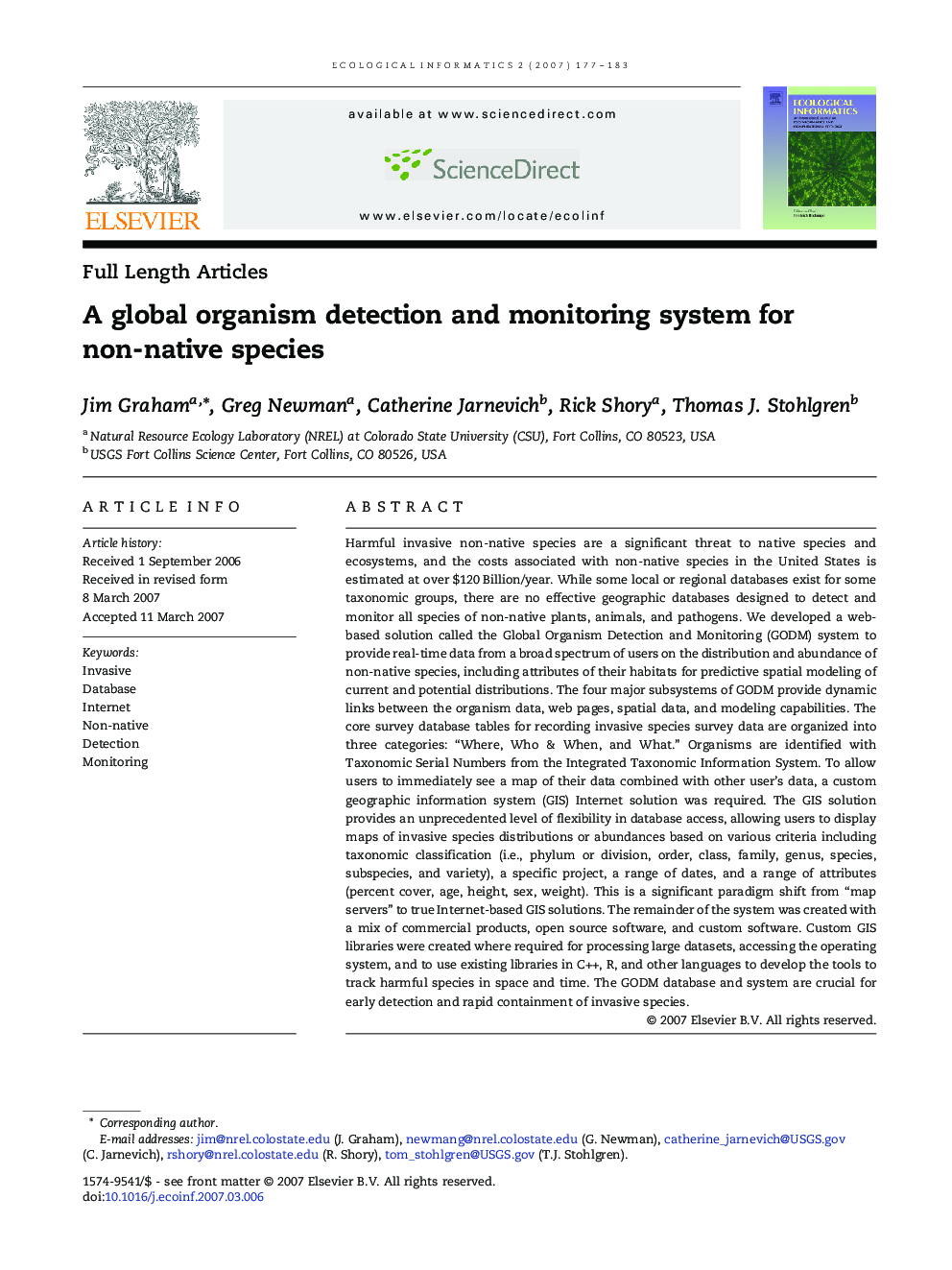| کد مقاله | کد نشریه | سال انتشار | مقاله انگلیسی | نسخه تمام متن |
|---|---|---|---|---|
| 4375431 | 1303267 | 2007 | 7 صفحه PDF | دانلود رایگان |

Harmful invasive non-native species are a significant threat to native species and ecosystems, and the costs associated with non-native species in the United States is estimated at over $120 Billion/year. While some local or regional databases exist for some taxonomic groups, there are no effective geographic databases designed to detect and monitor all species of non-native plants, animals, and pathogens. We developed a web-based solution called the Global Organism Detection and Monitoring (GODM) system to provide real-time data from a broad spectrum of users on the distribution and abundance of non-native species, including attributes of their habitats for predictive spatial modeling of current and potential distributions. The four major subsystems of GODM provide dynamic links between the organism data, web pages, spatial data, and modeling capabilities. The core survey database tables for recording invasive species survey data are organized into three categories: “Where, Who & When, and What.” Organisms are identified with Taxonomic Serial Numbers from the Integrated Taxonomic Information System. To allow users to immediately see a map of their data combined with other user's data, a custom geographic information system (GIS) Internet solution was required. The GIS solution provides an unprecedented level of flexibility in database access, allowing users to display maps of invasive species distributions or abundances based on various criteria including taxonomic classification (i.e., phylum or division, order, class, family, genus, species, subspecies, and variety), a specific project, a range of dates, and a range of attributes (percent cover, age, height, sex, weight). This is a significant paradigm shift from “map servers” to true Internet-based GIS solutions. The remainder of the system was created with a mix of commercial products, open source software, and custom software. Custom GIS libraries were created where required for processing large datasets, accessing the operating system, and to use existing libraries in C++, R, and other languages to develop the tools to track harmful species in space and time. The GODM database and system are crucial for early detection and rapid containment of invasive species.
Journal: Ecological Informatics - Volume 2, Issue 2, 1 June 2007, Pages 177–183